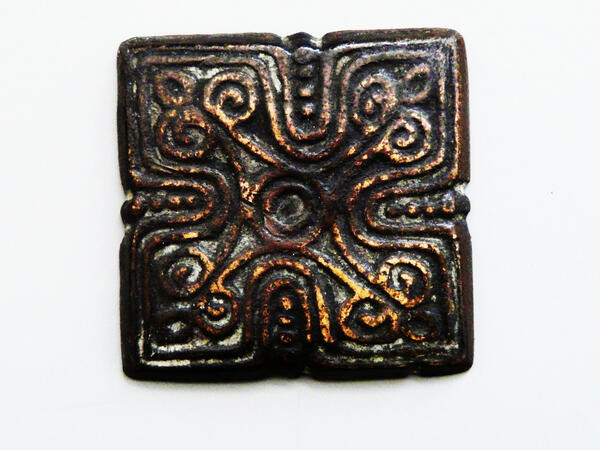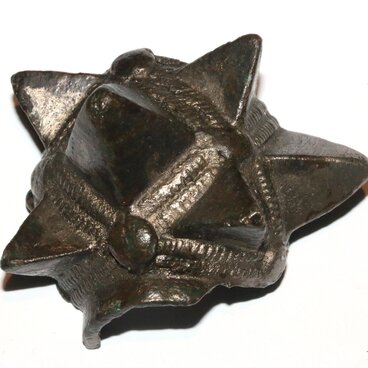Not all craftsmen in the Middle Ages were capable of creating their own, original works of art. Many used matrices that helped reproduce patterns forged or cast by other craftsmen. The more matrices a craftsman possessed, the more various objects he could make. Thus, the artisan was judged not only by his skills but also by the number of tools that he possessed.
The foundry workers on their part ‘hunted’ for new patterns and prepared matrices which they sold to jewelers and other craftsmen.
The matrices were used in the manufacture of men’s and women’s jewelry, ceremonial horse harness, and popular military garments and belts. Imitation molds and matrix stamps made it possible to fill the market with cheap products. Local jewelers continued to make highly artistic articles of gold and silver by order of the nobility, but these decorations were not mass-produced.
Bulgars wore rings, bracelets, pendants, temple rings, earrings. By the 13th century, stamped plate ornaments had almost superseded wicker open work items.
The exhibition ‘History of the Civilization of Volga Bulgars’ shows a matrix in the form of a square plate with a relief image of a four-petal rosette. Its petals are decorated with trefoils, the center is marked with two circles. Such a matrix was used in the stamping technique.
The matrix was placed on a table or a special stand, a thin metal plate was put on top and tapped with a special tool. After hammering an image appeared on the back side. This is how bronze plaques were made to decorate belts and gold plaques on clothing.
The matrices found on the territory of the extinct Volga Bulgaria have been perfectly preserved. They contain skillfully composed drawings of circles, flowers, leaves, spirals, wavy lines, and rhombuses. The most common motif is that of a multi-petal flower, resembling a daisy or a multi-beam sun. This element was borrowed by the Bulgars from the East Asian peoples, and later became the basis of Tatar folk ornamentation.
In addition to stamping on the matrix, masters also used another method, which allowed them to produce cheap jewelry — ‘hollow’ casting. Hot metal was poured into a mold and poured out after a while, obtaining hollow products.
The foundry workers on their part ‘hunted’ for new patterns and prepared matrices which they sold to jewelers and other craftsmen.
The matrices were used in the manufacture of men’s and women’s jewelry, ceremonial horse harness, and popular military garments and belts. Imitation molds and matrix stamps made it possible to fill the market with cheap products. Local jewelers continued to make highly artistic articles of gold and silver by order of the nobility, but these decorations were not mass-produced.
Bulgars wore rings, bracelets, pendants, temple rings, earrings. By the 13th century, stamped plate ornaments had almost superseded wicker open work items.
The exhibition ‘History of the Civilization of Volga Bulgars’ shows a matrix in the form of a square plate with a relief image of a four-petal rosette. Its petals are decorated with trefoils, the center is marked with two circles. Such a matrix was used in the stamping technique.
The matrix was placed on a table or a special stand, a thin metal plate was put on top and tapped with a special tool. After hammering an image appeared on the back side. This is how bronze plaques were made to decorate belts and gold plaques on clothing.
The matrices found on the territory of the extinct Volga Bulgaria have been perfectly preserved. They contain skillfully composed drawings of circles, flowers, leaves, spirals, wavy lines, and rhombuses. The most common motif is that of a multi-petal flower, resembling a daisy or a multi-beam sun. This element was borrowed by the Bulgars from the East Asian peoples, and later became the basis of Tatar folk ornamentation.
In addition to stamping on the matrix, masters also used another method, which allowed them to produce cheap jewelry — ‘hollow’ casting. Hot metal was poured into a mold and poured out after a while, obtaining hollow products.



